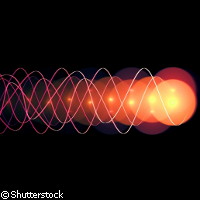20 attoseconds: the shortest time ever recorded
Over a century ago, Albert Einstein resolved an apparent paradox in the theory of photoemission by describing light as being composed of particles, called photons, rather than waves. Since then, photoemission has been explained as a process in which an electron is instantly ejected from an atom after the atom absorbs energy from a photon. Now, EU-funded physicists have shown that this does not happen immediately. In proving that there is a delay after the photon impacts the electron, the team has succeeded in measuring the shortest time ever to be recorded in nature. Understanding more about these miniscule interactions provides valuable insights into all biological and chemical processes. The results are published in Science. The research was undertaken by physicists from the Max Planck Institute of Quantum Optics, the Technische Universität München and the Ludwig-Maximilians-Universitäet Münich in Germany, who collaborated with physicists from Austria, Greece and Saudi Arabia. Their work was supported by the EU through a Marie-Curie Reintegration Grant and a Starting Grant from the European Research Council (ERC). In order to release electrons from their atomic orbitals, quick bursts of laser-light pulses were fired at neon atoms for less than four femtoseconds (a femotosecond is one quadrillionth of second). The atoms were simultaneously hit by extreme ultraviolet pulses, which lasted a further 180 attoseconds (an attosecond is one quintillionth of a second). The physicists then recorded when the electrons were ejected from the atom using the controlled field of the synchronised laser pulse as a kind of 'attosecond chronograph'. The result was a measurable time delay of about 20 attoseconds between the release of an electron occupying the 2p orbital and that of the electron occupying the 2s orbital. The measuring technique used by the physicists constitutes the fastest in the world. Furthermore, the recorded 20 attosecond time offset represents the shortest time interval that has ever been directly measured to date. 'One attosecond is one billionth of one billionth of a second, an unimaginable short interval of time,' explained Dr Reinhard Kienberger of the Max Planck Institute of Quantum Optics. 'But after excitation by light, one of the electrons leaves the atom earlier than the other. Hence, we were able to show that electrons 'hesitate' briefly before they leave an atom.' Members of the team from Germany, Greece and Austria determined that this hesitation accounted for five attoseconds. Understanding the reasons why the electrons waver before ejecting in this manner is open to interpretation. Dr Vladislav Yakovlev, also of the Max Planck Institute of Quantum Optics, explained: 'The computational effort required to model such a many-electron system exceeds the computational capacity of today's supercomputers.' Nevertheless, the physicists suggest that one cause might be the combination of interactions between electrons, and between electrons and their atomic nucleus. 'This electron-electron interaction may then mean that it takes a short while before an electron that is shaken by the incident light wave is released by its fellow electrons and allowed to leave the atom,' said Dr Martin Schulze of the Max Planck Institute of Quantum Optics. Dr Ferenc Krausz of Ludwig-Maximilians-Universitäet Münich highlighted the far-reaching implications of the team's achievements: 'These to-date poorly understood interactions have a fundamental influence on electron movements in tiniest dimensions, which determine the course of all biological and chemical processes, not to mention the speed of microprocessors, which lie at the heart of computers.'
Countries
Austria, Germany, Greece, Saudi Arabia



